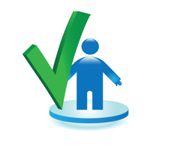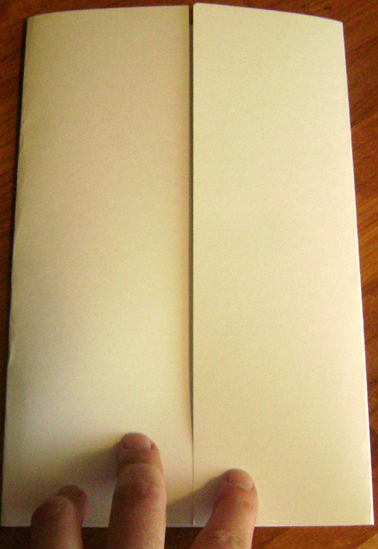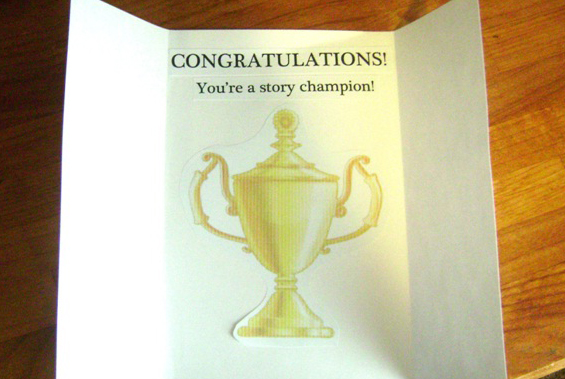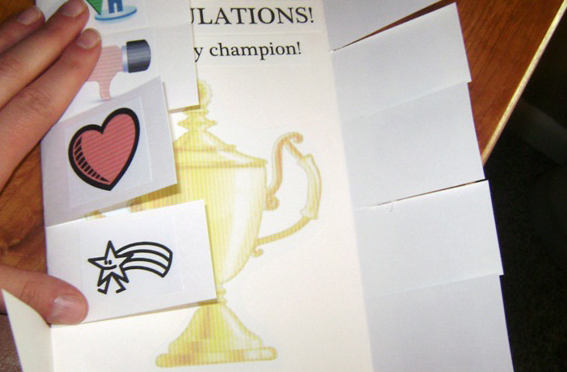Today I am excited to welcome fellow SLP and Blogger Michelle as a guest poster on Playing With Words 365. She shares with us a pretty awesome (and pretty simple) Story telling Chart that can be used to help little ones tell stories. ENJOY and be sure to head over to Michelle’s blog Speaking Of Kids and check out her other fabulous ideas!Â
What is a narrative? Narratives are basically stories. A child needs to know how to tell stories in order to be successful in school and make friends. Can you picture it? Children are always telling stories in the school setting. If a child is taking too long or their narrative doesn’t make any sense, the other child is probably going to walk away bored. It’s frustrating. Children with language disorders are less skilled at producing narratives (Paul and Smith, 1993). Research has also shown that narratives are closely related to academic success (Fey, Catts, Proctor-Williams, Tomblin, and Zhang, 2004). Narratives are also highly correlated with success in literacy (Bishop & Edmundson, 1987; Gillam, McFadden, & van Kleeck, 1995).
I was definitely inundated by the importance of narratives while in graduate school at Utah State University. After all, I was taught by the Gillams. (In order to avoid confusion, we called them She-Gillam and He-Gillam behind their backs. But that’s a story for another day). Ron Gillam was one of the creators of the TNL, Test of Narrative Language . The other frequently-used narrative test, the SNAP (Strong Narrative Assessment Procedure) was created by Carol Strong, who happened to be the dean of Education at the time. See, I told you. Inundated!
Needless to say, I graduated knowing more about narratives than I would ever remember or actually use, but still knowing full well that they were an important part of teaching language. So my first year in the schools I was inspired when I read an article in the Utah Special Educator (May 2010) about teaching Narratives to Preschoolers. I took that article and adapted my own Story Champion Chart to use not only with preschoolers but also with K-3rd grade. It has been AWESOME. The kids love it and they really do learn the main components of story-telling. It also translates into better writing, so the teachers love it too! There is a large symbol sheet for teaching, and a small symbol chart to use for printing and making the nifty little booklet. The symbols are:
Character

Problem

Feeling

Action

Ending

And here’s how to make it:
- Print 2 copies of the “Small Symbols† and 1 copy of “Trophy imageâ€.
- Cut out “Congratulationsâ€, “You’re a story championâ€, and the symbols.
- Get a piece of cardstock and fold it in on itself  like this:

- Glue the trophy and phrases on the inside like this:

- Glue the small symbols on the outside in 2 columns, leaving just a little bit of space in between each one.

- Make flaps by cutting in between the symbols

- Laminate it! Trim down the edges.
- Cut the flaps again on the same lines you cut before.

- Place small pieces of Velcro on the tabs and on the inside on the trophy image so they match up. Now you can have your student simply list off the 5 components, identify them from a familiar story, or make up their own stories by using each element.
You can download the pictures for this project below:
Michelle Carlson is an ASHA certified Speech and Language Pathologist. Â She specializes in teaching children with hearing loss how to listen and use spoken language. Â She just started up a private practice called Speaking of Kids, and also has a blog with the same name. Â She is currently trying to soak up as much momma time as she can with her boys who are 3 years old and 8 months old.
Hi! Loved the ideas on Nov 15 blog about Story Champion! Do you have a google docs PDF of those symbols that we could download for teaching purposes? Or is it available elsewhere? thanks!
Hi Maureen…We were just talking about how we’d like to out one together for you all..Check back!
Thanks again for hosting me on your awesome blog, Katie! And for any other viewers, head on over to my blog to check out the free PDF’s so you can make your own Story Champion Chart!